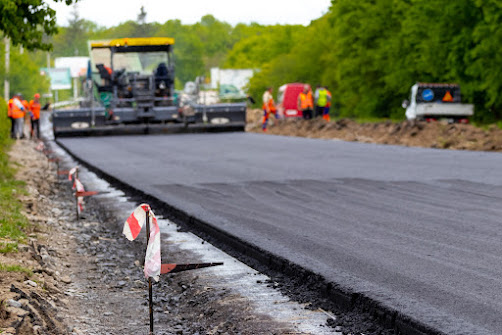The Techniques And Importance Of Dirt Road Stabilization
If you've ever driven down a dusty or muddy dirt road, you know the experience is far from ideal. Not only does it test your vehicle's endurance, but it can also turn into a safety concern. But what if there was a way to improve this experience? There comes dirt road stabilization, a set of techniques designed to enhance road quality and safety. Stick around to explore various stabilization methods and underscore the significance of maintaining a dirt-free road.
What Do You Understand By Dirt Road Stabilization?
Soil stabilization, often referred to as dirt road stabilization, is the practice of improving the physical properties of soil to make it more resistant to wear and tear. This process primarily aims to enhance load-bearing capacity, minimize permeability and extend the durability of the road. It's not just about covering a road with gravel or asphalt; it's a scientific approach that can involve a variety of methods. Stabilizing a dirt road is akin to building a foundation for a house; it provides a robust base that ensures longevity and improved usability.
A Variety Of Soil Stabilization Methods
- Plastic Gravel Stabilizer Method: This innovative approach employs honeycomb-shaped plastic grids encapsulating gravel. These grids distribute load evenly, minimizing rutting and erosion. What is the result? A structurally stable road that is less prone to deterioration over time.
- Bitumen Stabilization: Bitumen is a thick, black liquid that's mixed directly into the soil. It creates a composite material that is weather-resistant and more durable. Bitumen stabilization is particularly beneficial in regions with extreme weather fluctuations, providing a year-round stable road surface.
- Cement Stabilization: In this method, cement is meticulously mixed with the native soil. The chemical reaction between cement and soil produces a hard, semi-rigid surface. It's a cost-effective option that significantly boosts the load-bearing capacity of the road.
- Lime Soil Stabilization: Lime is a game-changer when it comes to soil stabilization. When added to soil, it reacts with the clay particles, reducing susceptibility to moisture. It minimizes road deformation, especially during rainy seasons, resulting in a more stable road surface.
- Chemical Stabilization Process: This method involves adding specific chemicals like calcium or sodium chloride to the soil. These chemicals enhance the soil's binding properties, reducing its permeability and making it more compact. It's an effective method for sandy or silty soils.
- Electro-Osmosis Method: Electrodes are planted in the soil and a low electric current is applied. That causes water molecules to move away from the road surface, effectively stabilizing it. It's an innovative method gaining attention for its effectiveness in enhancing road stability.
Why Maintaining A Dirt-Free Clean Road Is Essential?
A muddy or unstable road isn't just a mere inconvenience; it's a genuine hazard. For vehicles, the struggle starts with traction, as tires have difficulty getting a grip on muddy surfaces. That makes control difficult, increasing the likelihood of accidents. A muddy road is a slippery trap for pedestrians, posing a high risk of slips and falls. It also affects transportation efficiency, leading to delays and increased maintenance costs. Therefore, implementing dirt road stabilization techniques is essential for safety and a financially prudent decision.
Make An Informed Decision For Dirt-Free Roadways
If you're grappling with the challenges posed by unstable dirt roads, it's time to take action. Contact RK&R Dozer Service today to take dirt road stabilization services. Let's turn that rough ride into a smooth journey together.




Comments
Post a Comment